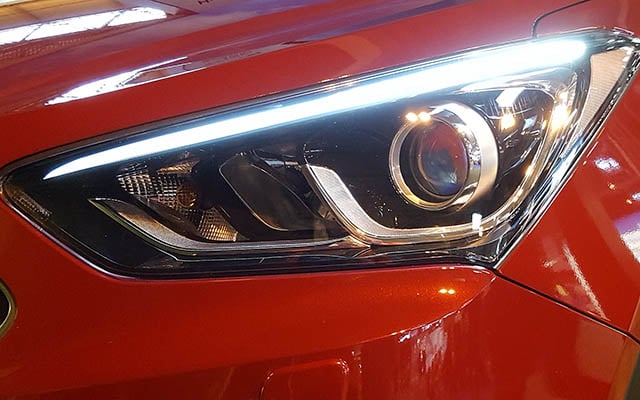
Wednesday 28 February 2024
Three quarters (76%*) of drivers have told The AA they are being blinded by the headlights of oncoming vehicles, while half (52%) have been dazzled by headlights from cars behind them.
However, it seems it’s not just headlights that are causing problems for drivers. A quarter (26%) of drivers say they have been blinded by brake lights while sat in stationary traffic, while one in six (17%) say they have been dazzled by brake lights when moving.
But it’s not just cars on the road causing discomfort, bright traffic lights are also causing discomfort for drivers. Three in 10 motorists (31%**) say they have been dazzled by traffic lights.
Drivers struggling with bright lights are often marked as an ‘older driver’ issue, however 70% of 18-24 year olds said they had been blinded by oncoming headlights. Somewhat surprisingly, two fifths (40%) of young drivers said they have struggled with glare from traffic lights, compared to 29% of drivers aged 65 and over.
LEDs and tighter rules
“Whether you are sat in a jam or in the flow of traffic, there’s a strong chance someone near you is in some discomfort with drivers struggling with bright brake and traffic lights.”
One cause of discomfort and dazzling from vehicles is the increased sales in SUV style cars which have headlights positioned higher than ‘traditional’ saloon cars. Another reason seen across vehicles and traffic lights is the transition from halogen bulbs to Light Emitting Diode (LED) lights. LEDs last longer, use less power and are usually smaller than their counterparts, which enables vehicle manufacturers more flexibility when it comes to designing cars and vans.
A fact noticed by drivers as more than half (56%) say there should be tighter rules on LED headlights which focus on their height, brightness and have automatic levelling to protect other drivers. More than a third (35%) say headlights should be a ‘warmer’ orange colour rather than the ‘brighter’ white colour currently used.
Two fifths (39%) say brake lights are brighter now than they used to be, while 27% say the design of brake lights on cars are ‘more style over substance’.
However, there is an acceptance that having brighter lights is better for road safety. A third say bright brake lights improve road safety, with a similar number saying bright headlights improve the visibility for drivers (29%).
Jack Cousens, head of roads policy for The AA, said; “U2 sung about ‘The City of Blinding Lights’, and for some drivers they experience this feeling when they get behind the wheel. Being dazzled by headlights is something most drivers experience, but it seems that many drivers are now overwhelmed with bright lights.
“Whether you are sat in a jam or in the flow of traffic, there’s a strong chance someone near you is in some discomfort with drivers struggling with bright brake and traffic lights.
“The effects and impact of LEDs across our road network, be it from vehicles or infrastructure, needs to be investigated by the Department for Transport and its agencies with recommendations made to protect road users.”
* Yonder conducted an online sample of 12,110 AA members aged 18-65+ between 11th and 18th December 2023. Data is weighted to be representative of the population of the UK. Targets for quotas and weights are taken from the PAMCO survey, a random probability survey conducted annually with 35,000 adults. Yonder is a founding member of the British Polling Council and abides by its rules.
** Yonder conducted an online sample of 12,432 AA members aged 18-65+ between 12th and 21st February 2024. Data is weighted to be representative of the population of the UK. Targets for quotas and weights are taken from the PAMCO survey, a random probability survey conducted annually with 35,000 adults. Yonder is a founding member of the British Polling Council and abides by its rules.
